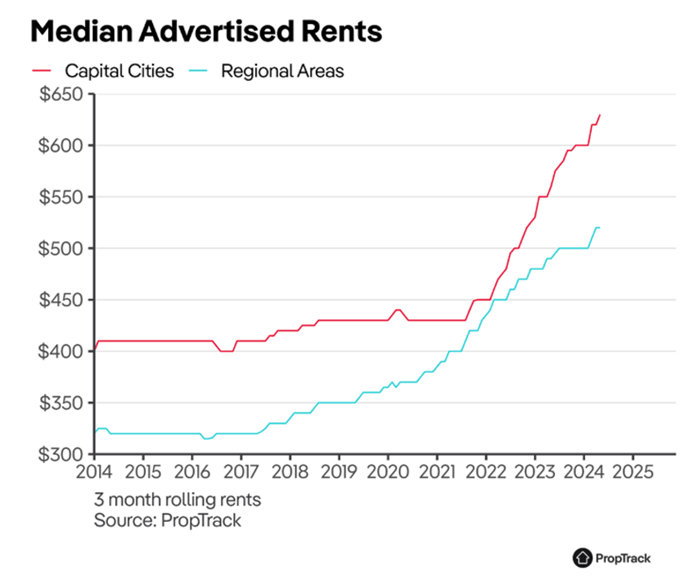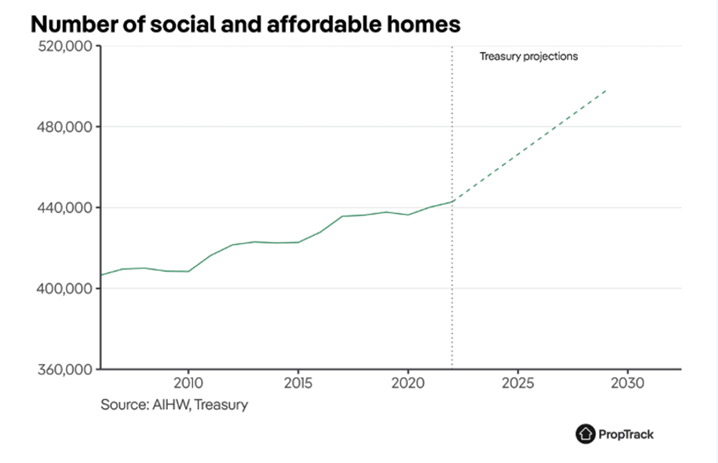

In PropTrack’s weekly update, Paul Ryan (pictured above), senior economist, delved into the 2024 federal budget’s significant focus on housing.
The 2024 federal budget has put a significant emphasis on housing, with a dedicated 42-page statement titled "Meeting Australia’s Housing Challenge." The government is addressing record-low housing and rental affordability alongside cost-of-living pressures.
“The government faces a difficult housing challenge, with record-low housing and rental affordability, combined with cost-of-living pressures,” Ryan said.
Here’s an overview of the key housing measures and their potential impact.
Low-income renters are set to benefit from a 10% increase in the maximum Commonwealth Rent Assistance payment, adding to last year’s 15% increase.
This enhancement, totalling more than $70 a fortnight depending on family circumstances, aims to alleviate rental stress for nearly one million households.
“Since 2020, typical rents have increased by around $200 per week,” Ryan said.

The budget allocates an additional $200 million annually to the National Housing and Homelessness Agreement and $1.9m in concessional loans to community housing providers. This funding aims to reduce wait times for accessing social and affordable housing services, addressing a critical need in a strained sector.
Expanding housing supply
To alleviate housing costs, the government has committed an extra $1 billion for enabling infrastructure such as water, power, sewerage, and roads.
Additionally, $88.8m is dedicated to funding 20,000 fee-free TAFE places, alongside fast-tracking 1,900 skilled visas.
“Given availability of trades has been a key constraint on construction since the pandemic, this will work to improve the speed and cost of construction,” Ryan said.
The government, through the National Cabinet, supports the construction of 1.2 million new homes over the next five years. However, current construction rates suggest a shortfall.
According to Ryan, “the National Housing Accord should be revisited" to ensure better housing outcomes across different regions.
Support for vulnerable renters
The government’s three-pillared strategy includes direct support for vulnerable renters through increased Commonwealth Rent Assistance and significant funding for social and affordable housing.
The Housing Australia Future Fund aims to build 55,000 new social and affordable homes by 2029, representing a 12% increase in available housing.

Challenges for first-home buyers
While the Help to Buy scheme remains stalled in parliament, the Home Guarantee Scheme continues to assist first-home buyers and single parents with small deposits.
Ryan acknowledged the frustration of many aspiring first-home buyers who are struggling to save a deposit amid record-high prices.
Despite the budget’s positive steps, more needs to be done to reduce housing costs.
Ryan stressed the importance of using existing dwelling stock more efficiently and suggested revisiting the National Housing Accord to include incentives for zoning and planning reforms. “
“Removing stamp duty would be transformative in improving productivity across the economy by opening up the ability for people to move where opportunities arise,” he said.
Ryan said there is no time to waste in adjusting these policies to significantly impact housing costs in the coming years.
Share your thoughts on the budget’s impact on housing and what else you think should be done to address the crisis.
